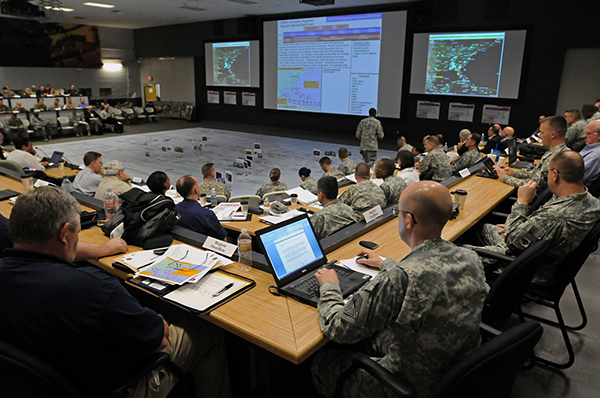
The Army Training Command on May 13 signed a memorandum of understanding (MoU) with Gandhinagar-based Rashtriya Raksha University (RRU) to develop a ‘Wargame Research and Development Centre’ in New Delhi. The project, which has been given a prototype name ‘WARDEC’, will be a first-of-its-kind simulation-based training centre in India that will use artificial intelligence (AI) to design virtual reality wargames.
What is the wargame centre about?
The Wargame Research and Development Centre will be used by the Army to train its soldiers and test their strategies through “metaverse-enabled gameplay”. The wargame models will be designed to prepare for wars as well as counter-terror and counter-insurgency operations.
Where will the centre come up and when?
The centre will come up in a military zone in New Delhi, confirmed RRU officials privy to the development. The RRU will join hands with Tech Mahindra to develop the centre in the coming three to four months, officials added.
The RRU, an institute under the Ministry of Home Affairs (MHA), specialises in national security and policing. Located in Gandhinagar’s Lavad village, it is an “institute of national importance” – a status granted to it by an Act of Parliament.
A team from the RRU will soon visit Delhi to get from the Army all the data it requires to begin work. The task has been assigned to faculty members from RRU’s School of Information Technology, Artificial Intelligence and Cyber Security.
“We already have a prototype lab for wargaming at our campus which was visited by Army officials recently. We have enhanced capabilities in the domains of artificial intelligence and cyber security. Our team will be visiting Delhi soon to begin work,” said the RRU official.
How will these simulation exercises play out?
Soldiers will test their skills in the metaverse where their surroundings will be simulated using a combination of virtual reality (VR) and augmented reality (AR).
“In metaverse, the players will get a realistic experience of the actual situation. If a weapon weighing 5 kg drops or the air pressure falls, they will feel it like anyone would in a live situation, real-time. The game would play out player versus player, player versus computer or even computer versus computer,” said an RRU official.
How will the centre help the Army?
The Army intends to use the wargame centre to train its officers in military strategies. According to RRU officials, the Army will provide data to set the backdrop of the gameplay, so that participants get a realistic experience.
“In Army, it is often said that the enemy can ambush you from 361 directions, where 360 sides are around the soldier, and one is above in case there is an airdrop. So, wargame simulation helps the Army think of all possible scenarios. Aspects such as slope of terrain, weather, time, air pressure, enemy surveillance reach, reach of artillery, the position of troops, soldier’s health and enemy’s reaction capabilities are all taken into account by the use of AI,” said the RRU official.
What promise does AI-based wargame simulation hold?
Apart from the armed forces, the BSF, CRPF, CISF, ITBP and SSB can also use the metaverse-enabled simulation exercises for better training.
The use of AI can provide a totally immersive training experience as it can simulate a battlefield close to reality and map several eventualities in the probable event of a war.
“For now, the centre will only be used by the Army but the intent is to develop it into a state-of-the-art research centre where other security agencies can also take part,” said the RRU official.
How many countries use such wargaming drills?
Since the 9/11 attacks, use of information technology-enabled wargaming is preferred by several countries like the US, Israel, the UK to prepare for possibilities in case of terror attacks or war.
In March 2014, several world leaders, including former German chancellor Angela Merkel, former US president Barack Obama and Chinese president Xi Jinping had played a war simulation game during the Hague Summit about how to react in case of a nuclear attack. In that case, the target of the nuclear attack was a fictional country named Brinia.

















